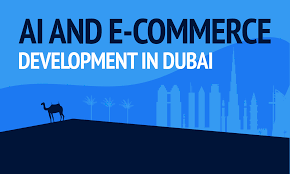Let’s be honest—if you’re serious about growing your business in London, you can’t ignore AI anymore. Every company wants to move faster, work smarter, and wow their customers, and that’s exactly what AI delivers. Right now, businesses all over London are turning to local AI development teams to stay sharp in a market that never stands still.
Why AI Matters Now
AI isn’t some optional tech upgrade—it’s quickly becoming the backbone of smart business. Automate the stuff that eats up your time. Cut costs without cutting corners. Make decisions that aren’t just guesses. When you work with the right team in London, you get tools that actually keep up with the pace of business.
Here’s what AI brings to the table:
- Real-time number crunching
- Customer experiences that actually feel personal
- Fewer mistakes, less hassle
- Faster decisions, less waiting around
Why London Businesses Need AI Developers
London’s a hotspot for innovation. Everyone’s hustling, and competition gets tougher every year. If you want to keep up, you need people who know AI inside and out and can craft solutions that fit the market right now.
- Top Talent, Right Here
London’s packed with machine learning experts, automation pros, and data scientists. These folks know how to turn raw data into real results.
- Faster, Smoother AI Adoption
A seasoned London AI company doesn’t waste time. They’ll help you roll out AI fast and avoid the headaches that slow others down.
- Solutions Built for Your Industry
Finance, retail, healthcare, logistics—London AI firms know the ins and outs of these industries. You get tools that actually solve your problems.
What London’s AI Developers Offer
A great AI company in London can help you with:
- Machine learning projects
- Chatbots and natural language processing
- Predictive analytics
- Automation powered by AI
- Computer vision
- Custom AI apps
- Plugging AI into your current systems
All of this helps your business grow without tripping over itself.
How AI Actually Grows Your Business
AI isn’t just tech for tech’s sake. It directly boosts your bottom line and makes your team more productive.
- Gets Rid of Repetitive Work
AI takes on the boring stuff, freeing people up for work that matters.
- Makes Customers Happier
Smart chatbots, personalized recommendations, and sharp analytics mean your customers get what they need, fast.
- Smarter Choices
With AI digging through your data, your leadership gets a clear view of what’s really happening—and where to go next.
- Ready to Scale
AI helps you ramp up without hiring a small army. Systems handle more, so you can grow without the growing pains.
Why Go Local? The London Advantage
Choosing a London-based AI developer means:
- Quicker conversations—no time zone drama
- They get the UK market
- Projects run smoother
- You stay on the right side of data laws
- Solutions fit your business, not just any business
That’s how you make sure your AI investment actually pays off.
The Bottom Line
If you want your business to innovate, keep up, and win in London, you need an AI developer who knows the city and the tech. With the right partner, you’ll roll out smart tools, automate the grind, and make sharper decisions. AI isn’t just the future here—it’s the present. Pick the right team now, and you’ll see the results for years to come.
FAQs
- Why should I hire an AI developer in London?
They bring deep technical skills, local industry know-how, and move quickly. - What services do London AI companies offer?
Everything from automation and machine learning to chatbots, predictive analytics, and custom AI projects. - Can small businesses benefit from AI?
Absolutely. It lightens the workload, boosts support, and helps you run more efficiently. - How does AI drive business growth?
AI sharpens your decisions, cuts out manual work, and gives customers a better experience. - Which industries in London benefit from AI?
Finance, retail, healthcare, logistics, real estate, tech—pretty much any sector looking to level up.




